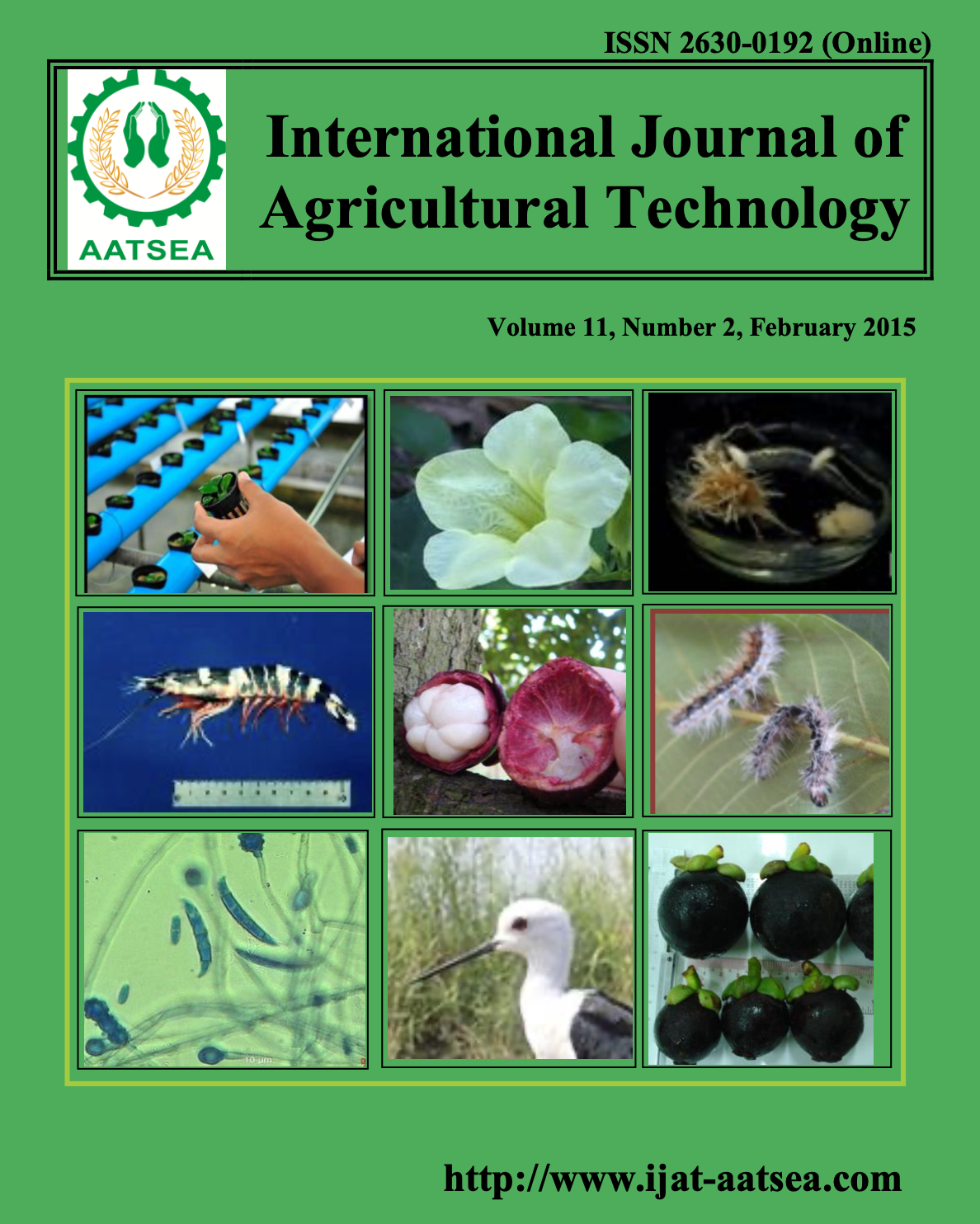Basis for developing biotechnology for plant protection means in Georgia
Main Article Content
Abstract
Article Details

This work is licensed under a Creative Commons Attribution-NonCommercial-NoDerivatives 4.0 International License.
References
Abbot, W. (1925). A method of computing the effectiveness of insecticides. Journal of Economic Entomology 18:265-267.
Chkhubianishvili, T., Kakhadze, M., Malania, I. and Ninua, L. (2011). The action of Beauveria bassiana introduced strains on the Colorado potato beetle. Proceedings of the 13th European Meeting 66:165-167.
Chkhubianishvili, T., Kakhadze, M., Malania, I. and Goettel, M. (2010). Perspectives of the Colorado potato beetle fungi pathology in Georgia. Proceedings of the 43th Annual Meeting of the Society for Invertebrate Pathology, Trabzon, Turkey. pp. 140.
Chkhubianishvili, T., Malania, I. and Kakhadze, M. (2013). Elaboration of integrated plant protection from fall webworm in urban environments. Proceedings of the 4th International Participated Entomopathogens and Microbial Control Symposium. Artvin, Turkey. pp. 89.
Chkhubianisvili, T., Malania, I., Kakhadze, M. and Gninenko, Yu. (2010). Study of nuclear polyhedrosis virus impact on Hypantria cunea caterpillars in Georgia. In: Forest Developments in Research and Application of Viruses in Forest Health Protection. pp. 73-80.
Chkhubianisvili, T., Malania, I., Kakhadze, M., Skhirtladze, R., Mikaia, N. and Rijamadze, I. (2011). The small mulberry pyralid, Glyphodes pyloalis Walker – the new urban pest insect in Georgia. In: Integrated Plant Protection: Materials of the International and Practical Conference devoted to the 49-th Anniversary of the Institute of Plant Protection, Minsk, Belarus. pp. 142-145.
Chkhubianisvili, T., Malania, I., Kakhadze, M., Chubinishvili, M. and Gninenko, Yu. (2013). Viruses and pheromones trap to control of the fall webworm. In: Recent Developments in Research and Application of Viruses in Forest Health Protection, House, Beijing: Chine Forestry Publ. pp. 131-136.
Chubinishvili, M., Rijamadze, I. and Ninua, L. (2010). The new methods for study entomopathogenic nematodes in Georgia. Abstracts, SIP, Trabzon, Turkey. pp. 62-63.
Chubinishvili, M., Skhirtladze, R. and Rijamadze, I. (2013). Study of entomopathogenic nematodes susceptibility to Coccidaes. Proceedings of the 4th International Participated Entomopathogens and Microbial Control Symposium. Artvin, Turkey. pp. 93.
Chubinishvili, M., Chkhubianisvili, T., Kakhadze, M., Malania, I. and Rijamadze, I. (2013). Biological protection of plants from harmful insects and entomoparasitic innovative search technology. In: International Scientific – Practical Conference Innovative Technologies for Secure and Sustainable Development of the Agrarian Sector, Tbilisi, Georgia. pp. 218-221.
Chubinishvili, M., Chkhubianisvili, T., Kakhadze, M. and Malania, I. (2014). Perspectives new nematode formulation technology for biological control to pest insects in Georgia, 47th Annual Meeting of the Society for Invertebrate Pathology and International Congress on Invertebrate Pathology and Microbial Control, Mainz, Germany. pp. 141.
Kaya, H. and Stock, P. (1997). Techniques in insect nematology. In: L.A. Lacey (ED.), Manual of Techniques in Insect Pathology, San Diego, Ca, USA. pp. 281-324.
Kakhadze, M., Chkhubianisvili, T., Chubinishvili, M., Skhirtladze, R., Rijamadze, I., Matiashvili, M. and Ninua, L. (2012). Perspectives of entomoparasitic nematode, Steinernema feltia using to control main pest insects of vineyards in Georgia. Proceedings of the 45th Annual Meeting of the Society for Invertebrate Pathology, International Congress on Invertebrate Pathology and Microbial Control, Program and Abstracts, Buenos Aires, Argentina. pp. 115.
Kakhadze, M., Malania, I. and Leonidze, N. (2010). Safety means for environment to control the fall webworm. Bulletin of the Academy of Agricultural Sciences of Georgia 28:81-86.
Malania, I., Chkhubianishvili, T., Hershenhorn, J. and Dor, E. (2008). The action of Fusarium Oxysporum sub. Orthioceras on the sunflower broomrape in Georgia. Proceedings of the First International Transcaucasus Conference on Plant protection, Tbilisi, Georgia. pp. 42.
Mikaia, N. (2011). Reproduction of entomopathogenic nematode, Steinernema feltia on cotton aphid, Aphis gossypii Glov. (Hemiptera: Aphididae). In: Integrated Plant Protection: Materials of the International and Practical Conference devoted to the 49-th Anniversary of the Institute of Plant Protection, Minsk, Belarus. pp. 297-300.
Mikaia, N., Kakhadze, M., Skhirtladze, R. and Chkhubianishvili, T. (2010). The susceptibility of entomopathogenic nematode towards the mulberry moth. Trabzon, Turkey. pp. 63.
Mikaia, N., Skhirtladze, R. and Rijamadze, I. (2012). Effect of entomoparasitic nematode Steinernema feltia on fern scale (Pinnaspis aspidistrae Sign.) Bulletin of the Georgian National Academy of Sciences 6:129-132.
Skhirtladze, R. and Rijamadze, I. (2014). Host-parasite interaction between the greenhouse whitefly and parasitoid encarsia in Georgia. Inf. Bull. IOBC EPRS, Research articles of International scientific conference “Plant Protection for Ecological sustainability of agrobiocenoses”, Almaty, Kazakhstan. pp. 139-141.
Stock, P. and Goodrich-Blair, H. (2012). Nematode parasites, pathogens and associates of insects and invertebrates of economic importance. In: Manual of Techniques in Invertebrate Pathology. pp. 373-426.


